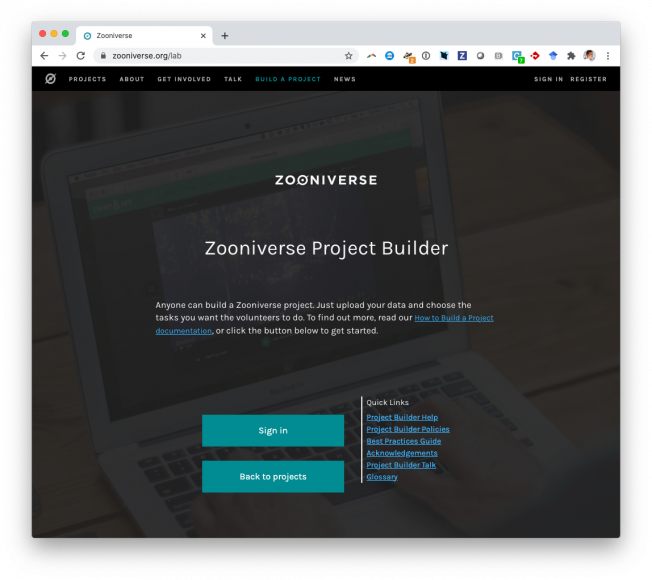Planet Hunters X: Searching for nearby neighbors of 75 planet and eclipsing binary candidates from the K2 Kepler extended mission
Astronomical Journal American Astronomical Society 151:6 (2016) Article 159
Abstract:
We present high resolution observations of a sample of 75 K2 targets from Campaigns 1-3 using speckle interferometry on the Southern Astrophysical Research (SOAR) telescope and adaptive optics (AO) imaging at the Keck II telescope. The median SOAR $I$-band and Keck $K_s$-band detection limits at 1'' were $\Delta m_{I}=4.4$ mag and $\Delta m_{K_s}=6.1$ mag, respectively. This sample includes 37 stars likely to host planets, 32 targets likely to be EBs, and 6 other targets previously labeled as likely planetary false positives. We find nine likely physically bound companion stars within 3'' of three candidate transiting exoplanet host stars and six likely eclipsing binaries (EB). Six of the nine detected companions are new discoveries, one of them associated with a planet candidate (EPIC 206061524). Among the EB candidates, companions were only found near the shortest period ones ($P<3$ days), which is in line with previous results showing high multiplicity near short-period binary stars. This high resolution data, including both the detected companions and the limits on potential unseen companions, will be useful in future planet vetting and stellar multiplicity rate studies for planets and binaries.EDITORIAL: THE AAS JOURNALS CORRIDOR FOR INSTRUMENTATION, SOFTWARE, LABORATORY ASTROPHYSICS, AND DATA
The Astronomical Journal American Astronomical Society 151:2 (2016) 21
Blue early type galaxies with the MeerKAT
Proceedings of Science (2016)
Abstract:
We discuss a potential MeerKAT campaign to shed more light into the nature of the optically identified Blue Early Type galaxies (BETGs), a subset of the so-called "green valley" population, quenching star formation on time scales of less than 0.25 Gyr and the likely progenitor population of post-starburst galaxies. Employing a WSRT pilot survey of four galaxies, we have shown that BETGs have radio properties that fit to a mechanical removal of star forming material, potentially by AGN activity, as in particular we found H I to be removed farther and farther from the centre of the galaxies with older and older age of the stellar population. We argue that MeerKAT is the optimal instrument to conduct a pointed survey of BETGs to become more conclusive about this specific transition state, which is so rare that it will not be detected at a high enough rate in planned sufficiently sensitive large-sky surveys, for which we expect a total detection number of the order of 12 objects.Extended X-ray emission in the IC 2497 - Hanny's Voorwerp system: energy injection in the gas around a fading AGN
Monthly Notices of the Royal Astronomical Society Oxford University Press (2016) stw230-stw230
Abstract:
We present deep Chandra X-ray observations of the core of IC 2497, the galaxy associated with Hanny's Voorwerp and hosting a fading AGN. We find extended soft X-ray emission from hot gas around the low intrinsic luminosity (unobscured) AGN ($L_{\rm bol} \sim 10^{42}-10^{44}$ erg s$^{-1}$). The temperature structure in the hot gas suggests the presence of a bubble or cavity around the fading AGN ($\mbox{E$_{\rm bub}$} \sim 10^{54} - 10^{55}$ erg). A possible scenario is that this bubble is inflated by the fading AGN, which after changing accretion state is now in a kinetic mode. Other possibilities are that the bubble has been inflated by the past luminous quasar ($L_{\rm bol} \sim 10^{46}$ erg s$^{-1}$), or that the temperature gradient is an indication of a shock front from a superwind driven by the AGN. We discuss the possible scenarios and the implications for the AGN-host galaxy interaction, as well as an analogy between AGN and X-ray binaries lifecycles. We conclude that the AGN could inject mechanical energy into the host galaxy at the end of its lifecycle, and thus provide a source for mechanical feedback, in a similar way as observed for X-ray binaries.Galaxy Zoo: morphological classifications for 120 000 galaxies in HST legacy imaging
Monthly Notices of the Royal Astronomical Society Oxford University Press 464:4 (2016) 4176-4203



